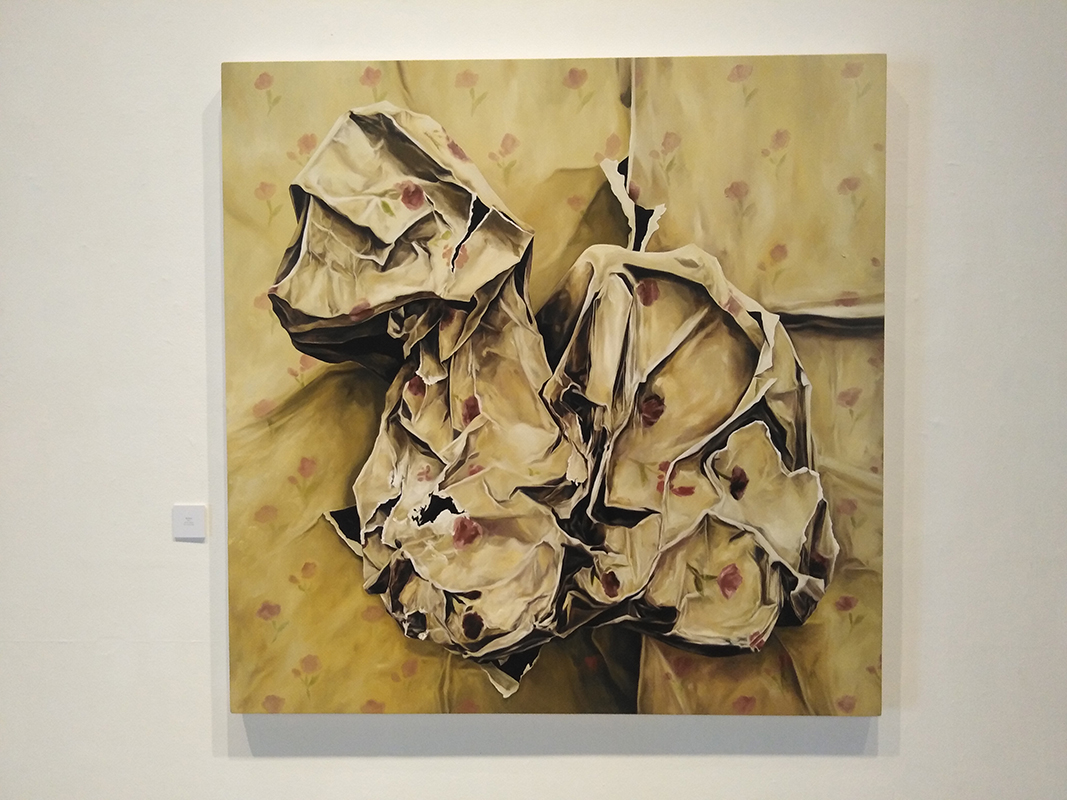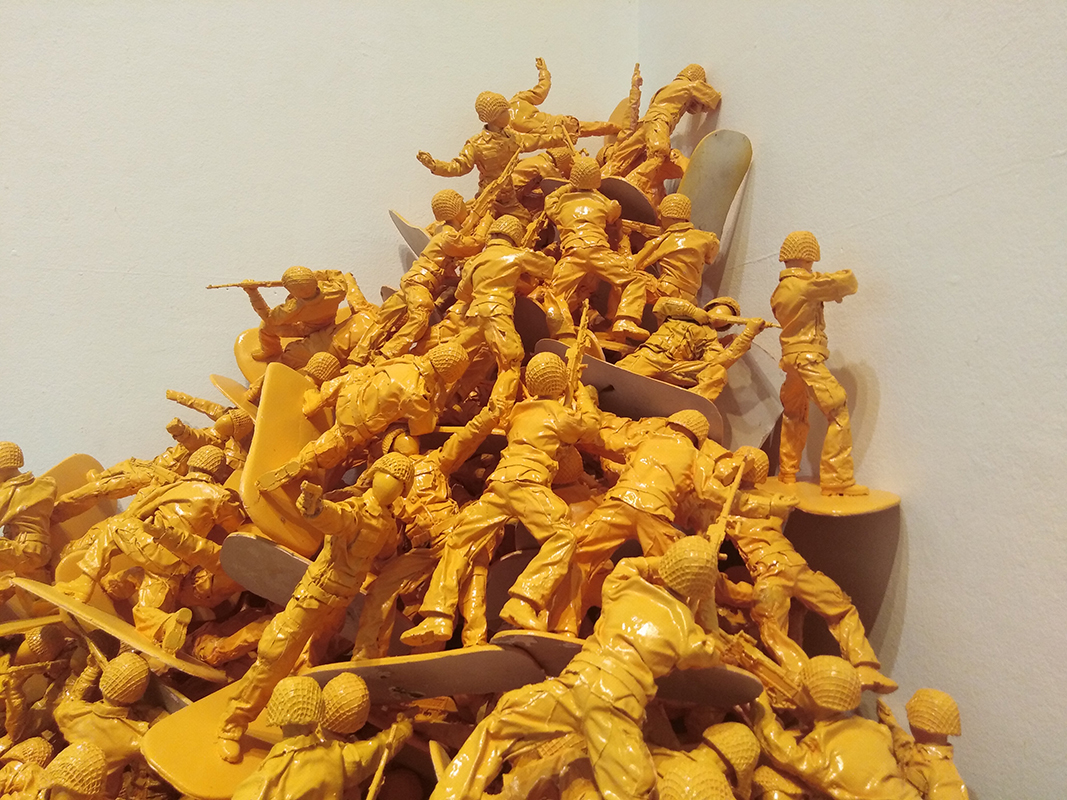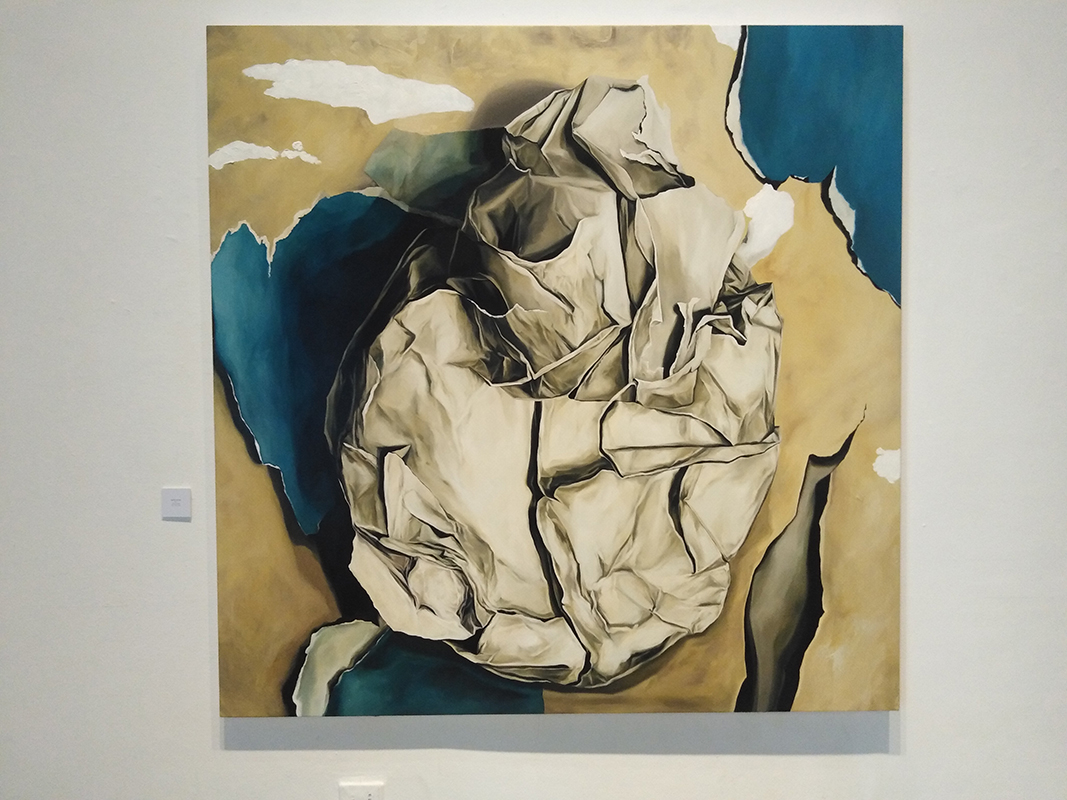In 1929, Rene Magritte sent the art world into a cesspool of existential chaos by suggesting a simple query: Is this a pipe? With his seminal work The Treachery of Images, Magritte questioned the nature of reality and our perception of it through both the depiction and concealment of images. The surrealist has left many in his wake wondering what philosophical mind games constitute any kind of imagery at all.
Philippine painter Ayka Go treads her own Magrittean track down the path of memory and nostalgia. In her solo show, ‘some things we call home’, Go alludes to the innocence of childhood toys, now obscured by the familiar backdrops that were once so bright and welcoming to us. Following Magritte, the artist here seems to be asking: Is this home?
“The recreation of a sensuous surface has long been the allure and conceit of painting,” writes JC Rosette in the exhibition notes. And indeed, Go is a skilled painter of the surfaces we often take for granted – the decorative, intimate, and undeniably present surfaces of domesticity. With a meticulous hand, she depicts toys completely engulfed by paper, swallowed whole by the decaying wallpaper that may have once lined our childhood rooms. Paper surfaces have been a staple in Go’s body of works since her studies at University of the Philippines Diliman. She began creating paper sculptures out of childhood diaries for her thesis. This evolved into her exploration into the materiality of paper through her painting. She has since gone on to exhibit her work in Kaida Contemporary, Underground Gallery, West Gallery, and as far abroad as Paris.
Each work in the show presents almost a guessing game, inviting viewers to ponder what may be hidden beneath the many paper folds. The titles of each work may give the answer away, or may instead leave the viewer guessing even further. Emulating Magritte once again, Go seems to be showing us an airplane, yet by hiding it, it is simultaneously saying, “This is not an airplane.”
The treachery here lies in whether Go is actually depicting anything at all. Airplane features the familiar cross-like shape of a regular toy airplane. And yet, all we see is a cross-like shape formed by the folds and crevices of the now browning and faded floral surface. The smallest painting in the show is a monochrome work whose implied objects become apparent only after reading the title: a, b, c’s.
Go’s process is just as detail-oriented as her paintings suggest. She starts with a paper sculpture that serves as a reference for each work. The abstract yet precise nature of wrinkled paper entails a very precise hand. Yet, for however lifelike she renders each crease and fold, she tries to approach each work as intuitively and playfully as she can. In her works, the hyperreal meets the painterly in an attempt to emphasize the true heart of each work beneath the crumpled, flaking layers of technique.
some things we call home evokes ideas a lot more general than each hidden toy suggests. Go is playing on the paradigms of early memories that we associate with these symbols – without even clearly illustrating them. These toys – the rubber duckie, wooden cat, teddy bear – aren’t arbitrary. Go specifically chose toys that harken back to her own childhood and sees each work almost as portraits of the family members they belonged to, in effect preserving years of beloved memories and experiences. In both showing and not showing, Go is initiating a deeper inquiry into how we define childhood, nostalgia, and what precious tokens, toy or not, send us through a jolly yet wistful stroll far down memory lane.
Which once again begs the question, Is this home? At the far corner of the gallery space is a notable mass of yellow. A pile of 150 12-inch toy soldiers launches an attack on the clean white walls, scrambling over each other to reach the top while those at the bottom defend against invisible foes. They may either be attacking the very walls that have consumed their fellow toys or valiantly trying to join them in the obsolete recesses of memory. Such a scene seems to imply that our visual of home is not as impregnable as we may think.
Indeed, perhaps this no longer is home. The walls being now old and broken down, the wallpaper peeling and crumbling away. Rather, on a more hopeful note, Go illustrates that home does not lie in the very images we see but in the deep, personal memories we recall from them. Home becomes a temporary construct, while memories persevere through all manners of wear and tear. In the artist’s own words, “Home is found and experienced by being with the people you love.”
some things we call home by Ayka Go continues until July 9 at the Finale Art File Tall Gallery.
Mara Fabella is an artist, writer, and occasional fitness junkie. Tap the button below if you'd like to buy her a coffee.





